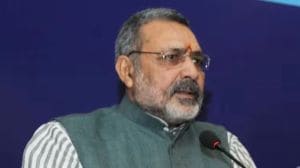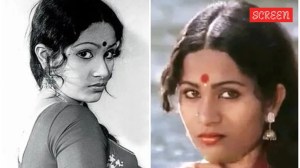Indie wallahs
A new pack of filmmakers travels the international film festival circuit and changes the perception that Indian cinema is all about safe Bollywood kitsch.
Sidharth Srinivasan,35
Pairon Talle
Toronto International Film Festival
Sidharth Srinivasan went indie after a bitter taste of Bollywood. The alumnus of St Stephens College,Delhi,made a film,Amavas,in 2004 with Konkona Sen Sharma,which never got released. It was disheartening to rely on production houses to release my films. It made much more sense working independently, he says. For Pairon Talle,a Hindi feature set in an abandoned silica mine on the outskirts of Delhi,he tapped into his savings,and a grant from the International Film Festival Rotterdams Hubert Bals Fund.
The protagonist of the movie is a security guard who has been tasked with guarding a mine against trespassers. He is faced with a dilemma when a young couple asks him for shelter at the mine. There is a conflict between the distractions of modern society and his loyalty to his master, says Srinivasan,whose first documentary,The Tightrope Walker,was screened in the competition section of the Venice Film Festival in 2000.
Pairon Talle was shot in digital format on real locations,like the silica mine in Surajkund,and in the Aravalli ranges. It will be screened at the Rotterdam Film Festival in January. It has been picked up for North American distribution by the Global Film Initiative that encourages world cinema.
Thiagarajan Kumararaja,34
Aaranya Kaandam
Saiff,New York
I didnt fit in a beginning,a middle and an end. It would have become a conventional gangster film, says Thiagarajan Kumararaja of his film Aaranya Kaandam,that was screened to an appreciative audience at South Asian International Film Festival (SAIFF),New York,and won the Grand Jury Best Feature Film Award. The film has Jackie Shroff in the role of an ageing mobster,struggling to retain his power and the affections of his young mistress. There is no definite story in my film. Just a collection of climax scenes that add up, he says. The film scores high on gory shootouts and Tarantino-style blood spilling. It was produced by Chennai-based Capital Film Works,which made the cult hit Chennai 600028.
Kumararaja,who writes scripts for Tamil films,shot the film in digital format in Chennai in two months,while simultaneously writing songs for a recent Tamil film Va Quarter Cutting. Coppola and Tarantino have been his biggest teachers he dropped out of a visual communication course in Loyola College to make films. His first effort,Becky,a 60-second animation clip won a cash prize of Rs 1 lakh at a competition. That gave me enough capital to make my film, says Kumararaja. He is hoping for a release early next year. What inspired him to make a gangster movie? Satya. If you watch it,you cant but think of making your own gangster flick.
Q (Kaushik Mukherjee),36
Gandu
Saiff,New York
W ith a title like Gandu,Kaushik Mukherjees film was not going to use canoodling flowers or raunchy item numbers to play safe on sex. The festival circuit is abuzz with the films graphic sex scenes and profane language and breakthrough is a word used a lot in discussions of the movie. Why the title? I like playing with dangerous words, says Mukherjee.
Gandu,the films protagonist,is an angry young man,who hates his life and his mother,the mistress of a businessman. He finds refuge in rap and his friendship with a rickshaw-puller in Kolkata with whom he shares hash-glazed days and porn feasts. The language used in the film is itself a character. But I dont intend only to shock people. I want to push the boundaries of assembly-line Bollywood movies that we have all grown up on, he says.
The film,made on a meagre budget with actors from Bengali theatre,won the Grand Jury Award for Best Director at SAIFF,and an American critic was impressed enough to call him Indias answer to Gaspar Noe.
Mukherjee was one of many rebels with a guitar in the Kolkata of the 1990s,part of various bands that made angsty music about the limiting norms of society. He drifted into advertising when he realised that a musical career was a dead end and spent six years in Sri Lanka. He returned to India in 2002,and quit advertising for films. His last three films Beesh,Love In India and Gandu dealt with sexuality. Indian society has a repressive attitude towards sexuality. I am intrigued by that, he says.
Srinivas Sunderrajan,26
The Untitled Karthik Krishnan Project
Saiff,New York
In a city that churns out bloated big budgeters,and shiny,happy,song-and-dance movies every Friday,Srinivas Sunderrajan collected his savings of Rs 40,000,a Sony HD Z1 digital camera and a motley cast,and made a movie. When The Untitled Karthik Krishnan Project premiered at SAIFF,New York,last month,the audience called it mumblecore the American festival circuit term for films made on low budget in digital format.
The Untitled Karthik Krishnan Project is a movie about making a movie,and revolves around a software engineer who wants to be a filmmaker. He reads an indie filmmakers account of meeting Quentin Tarantino and gets in touch with him. The idea struck Sunderrajan when a techie came up to him after the premiere of his short film Tea Break in Los Angeles in 2007. He was intrigued about my interaction with Tarantino. He said he had a story and asked me to help him make his film, he says. Two years later,Sunderrajan decided that the engineer,Karthik Krishnan,was apt subject for a film,and cast him as the protagonist. The film was shot in Mumbai,at the house of his cameramans grandmother on Mohammad Ali Road,and cheap bars in Wadala. I liked the obscurity of the locations. We had to bribe waiters at the bars daily to allow us to shoot in the mornings before they opened, says Sunderrajan.
The 26-year-old got into films by accident. He enrolled in Mumbais KC College for Mass Communication because he thought he could study event management there. Once I realised my mistake,that dream vapourised. Then I got interested in movies, he says. He has worked as associate director for Chris Smiths The Pool,which was shot in Goa. Sunderrajan visited various production houses with story ideas but was turned down each time. The refrain was that I needed seven-eight films under my belt if I had to get their financial backing, he says. He realised he didnt need their money.
Kaushik Ganguly,42
Aarekti Premer Golpo
Berlin Film Festival; I-view Film Festival
Bengali jatra actor Chapal Bhaduri is at the heart of Kaushik Gangulys film Aarekti Premer Golpo,which premiered at the Berlin Film Festival in February,and won the Best Feature Film Award at the I-View Film Festival,New York. Bhaduri was famous for playing women characters on stage and had a signature feminine voice. Framing the biopic is the relationship between a gay documentary filmmaker (played by filmmaker Rituparno Ghosh) and his cameraman who come to Kolkata from Delhi to make a documentary on Bhaduri. The film describes Bhaduris experiments with alternate sexuality, says Ganguly,who had made a tele-film on lesbian relationships in 2002,Ushno Taar Jonno,and was itching to tell Bhaduris story. I approached Ghosh to essay the role of a gay filmmaker and he gladly agreed, says Ganguly,who wrote the script twice,fearing the first draft was not up to scratch. Ghosh also plays the young Bhaduri in the film.
This is Gangulys third feature film. He started his career writing scripts for TV in 1987. I was a schoolteacher for eight years when I realised that writing scripts was my calling, he says.



- 01
- 02
- 03
- 04
- 05




























